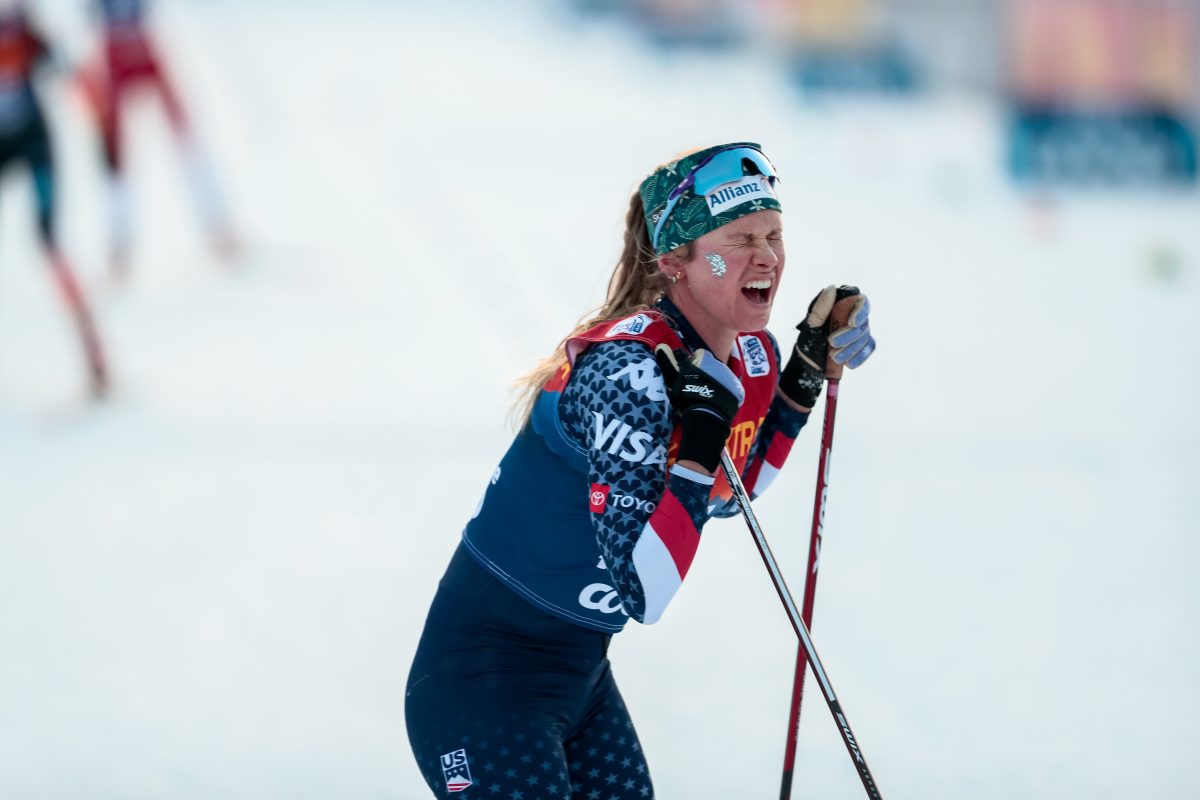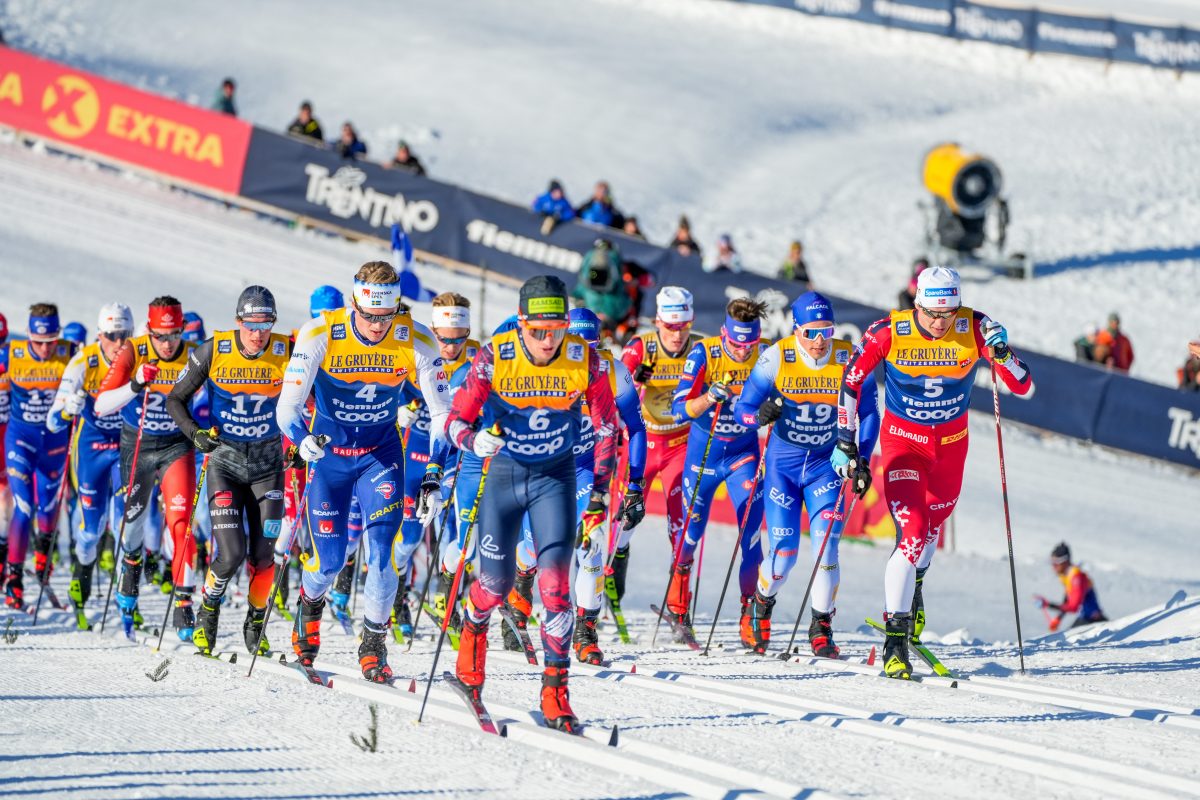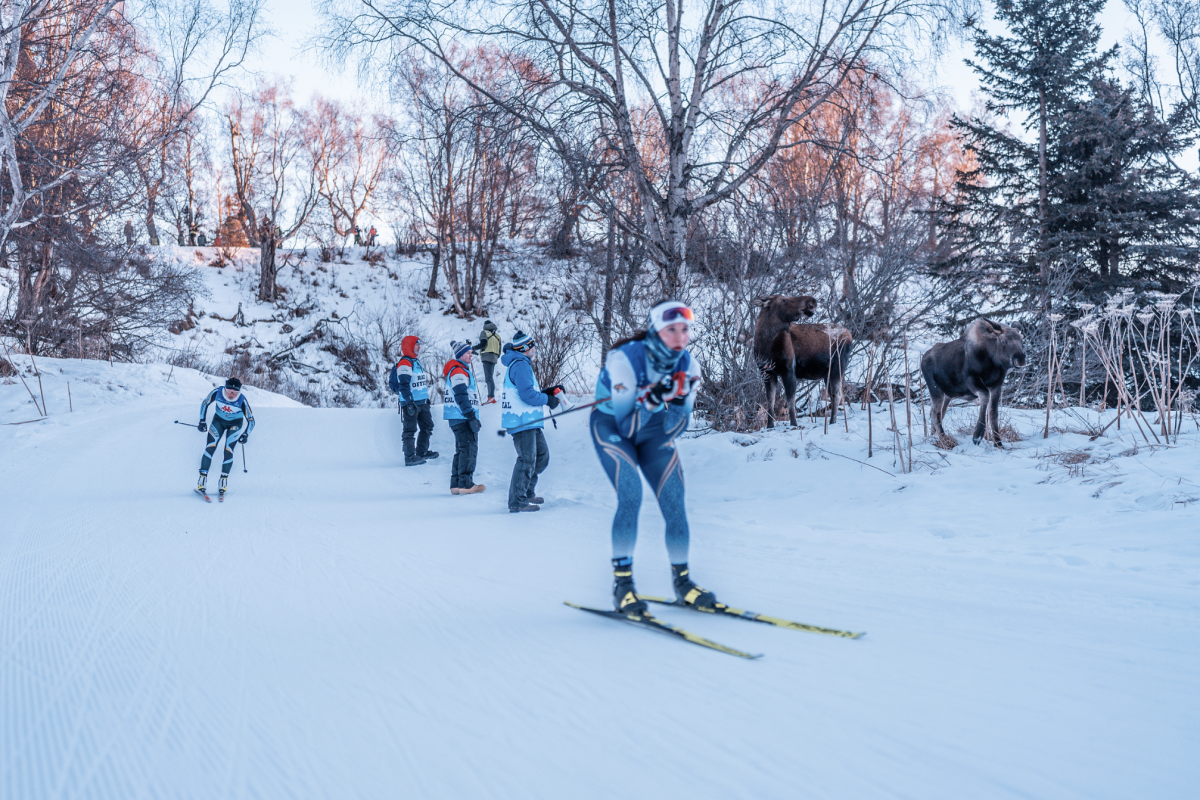Dorcas Wonsavage sat down with
Luke Bodensteiner to discuss the role of NENSA, and USSA & USST in making
our skiers 'Best in the World'.
*Note: Luke reviewed the article and has clarified key
points that I missed. His comments are included here, now, in italics.
Park City, UT (June 27*): After
a phenomenal and inspiring set of seasons from our U.S. Ski Team athletes,
last season's results were disappointing- for everyone involved. And when
USSA cut funding for the Development Team altogether, an uproar was heard
from Maine to Alaska.
I sat down with Luke Bodensteiner,
Director of Nordic Skiing for USSA, in his Park City office last week. It
was a chance to catch up with an old friend and former teammate, and to discuss
and clarify what roles and responsibilities NENSA and USSA see for themselves
in the US Ski Team 'Development Pipeline'.
Fund the Best, or Fund Them All?
Luke is well aware of how unpopular
USSA's decision has been, to cut funding for the Development Team. He addressed
it almost immediately. 'We haven't faced budget
cuts. Our budget has grown (for example by approx. $25K this year). But
the level of spending at the top-end has also grown to meet the needs of the
top athletes, so even though we have slightly more money, we're supporting
fewer athletes.'
The reality is, we're
going to get more money in the future, we've got to have results now, and
that means medals eight months from now (at the Torino Olympic Games).' He
pointed to the Jumping team, that for lack of recent results, has to exist
on less than $150,000/year for athletes, coaches, travel, training, wax and
ski technicians. 'If Freeman (and Swenson, Wagner, Dussault) are going to
be competitive against Norway, Sweden and Italy, they need everything we can
possibly give them.'
(My paraphrasing of the current
USSA logic: Do we cut our elite athlete's funding, and their chances for medals
and serious, long-term funding, to spray money at 'looking good, but unproven'
development team level skiers? We need results now. So either we fully support
a known quantity, or we put nickels in the slot machine and hope for three
cherries to appear.)
USSA is supporting some of the
Development level athletes this year, but with a different approach. Coaches
of athletes who have had significant results at World Juniors and U.S. Nationals,
will be invited to accompany their athletes to important training camps and
races. For the athletes, this will provide them with consistent coaching from
the people that made them fast. For the coaches, it's a chance to work with,
communicate with, the current US Ski Team administration and to be exposed
to the next level of athlete coaching and support. It's athlete support and
coaches ed. rolled in to one. And a serious breakthrough by USSA/USSA –
an acknowledgement that they haven't or can't provide the best coaching for
our best athletes, that consistent coaching supercedes the current coach-of-the-quadrennial.
Coaches Education
Luke spoke of the need for coaches'
education, yet in the same breath acknowledged that USSA did not have the
manpower to oversee a nation-wide program, I reminded him of NENSA's coaches
education clinics and certification. 'We've produced a model that we can share
(and have) with the other regions,' I pointed out.
'My view on coaches education is not that we want to design a program to
give to the regions, or not that we aren't excited about promoting education
programs that have been developed by the regions. As I mentioned,
there are likely materials that have already been developedthat have great application,
and which can be used, especially if there's a central coordinating point between
the regions. At the moment, our coaches aim to share with all interested
individuals themethods we use to train athletes, through regional camps, articles,
a coaches' newsletter, and the national coaches' conference. Importantly,
the(USSA Elite and Performance Sport Coaching) CDs that have been produced for
strength and conditioning, psychology and nutrition are not alpine materials. They
are multi sport materials developed through our sports science department, and
have good application to all ski sports.'
This is excellent news. Although not advertised on the Cross-country section
of the USSA website, visit http://www.ussa.org/PublishingFolder/3533_5569.htm
to review these materials. I am now very glad that I paid my USSA Coaches
Membershipdues.)
Two points are on the table on
this issue:
1) Each region has had
to fend for its self for so many years, a few have created their own coaches
ed programs. Each has their own adaptations specific to their region, whether
due to coaching traditions, personalities, weather and snow calendar, the
power-base structure (school, club, event, sponsors). Any nation-wide program
will have to provide a consistent message on training athletes, yet provide
the flexibility to adapt to each regions' unique needs, with incentives in
place to improve each one's less-than-ideal, but entrenched, philosophies
and power structures.
2) USSA would prefer to be the
leader in creating a coaches ed. program, but obviously cannot. The best they
can do now, to send a consistent message to each region, is to offer to send
Vordenberg to coach/athlete programs in each region, eg. Central's coach ed
seminar and NENSA's July Elite Team Camp, and to fund
Development Team member-eligible
(if there were a Dev.Team) coaches to national camps and races. 'We
definitely are grateful for the work being done in the regions,' added Luke.
The more materials and organization the regions
can accomplish now, the easier it will be to help USSA create our ideal of
a consistent message sent out to all coaches.
With NENSA's staff, board, and
ski community, we have the staff and board power, experience and motivation
to accomplish what USSA cannot, at this time. Our committee members and staff
will continue to put together a comprehensive Coaches Ed certification program.
Long-Term Strategic Plan
USSA Nordic staff is currently
revising its strategic,
long-term plan, outlining their short and long-term goals, reviewing their
strengths and weaknesses, what they need and what they need to do to help
our athletes win 'Heavy' medals (medals earned in competition against Norway,
Sweden, Italy, not Japan, and the Ukraine). Explains Luke:
'The planning
É is not new. Twice a year we update our strategic plan (finalizing
the operational plan for the coming season in April, and renewing the long-term
plan in July). This plan and this process has been in place since
1997. What you saw is,
however, a new
format, which we hope will be more easily translated to not only the cross
country committee, but also the regions, the coaches, etc. We want
to make the planning more clear to the skiing community because we don't want
to dictate the direction we take, especially with regional-level development,
É
What we want to do is coordinate the best interface between
regions and the national program, and by using a more easily understood format,
we hope to begin to get better input from the regions and clubs. Ultimately,
we hope that this helps to develop and strengthen the partnership nationally
and within the regions.'
Their Plan will be offered up
for review to key people in each region later this summer, and NENSA staff
will have the opportunity to comment.
Top to Bottom – the Bodensteiner/USSA ideal
I was impressed, reading USSAs
Strategic Plan draft, to see how many of the points NENSA had already addressed,
accomplished, and could contribute to USSAs plan. When I pointed this out
to Luke, however, he said he'd prefer the direction for US Skiing to come
from the Top, down.
This would work if 1) the United
States was the size of every other ski nation – 25% of its total size
(thank you, Alaska), and 90% of its current snowbelt. 2) the United States
was a socialist, not democratic country. And, 3) there was an administration
that could give us direction.
Until then, the recent consensus
online ( http://www.fasterskier.com/feature.php?series_id=24
)is that U.S. Skiing needs to improve its Vertical Integration.
Vertical Integration
The United States has good, sometimes
great, programs at each level – BKL/youth, High School/Club, Collegiate/University,
Senior/Sponsor/Club, Master/Club. But as an athlete grows older (not necessarily
better), they move, due to chronological age, from one program to another.
There is no continuity of coaches education or training philosophy from one
level to another. It is a horizontal move – from same-old to same-old,
not an upward move associated with improvement, a vertical move (J.Galanes/J
Quinn-Hurst. http://www.fasterskier.com/opinion2235.html
)
Bottom to Top – The NENSA and APU/NSC model
In 1997 John Caldwell and Company,
having long realized the limitations of USSA, assembled their nordic brain
trust, the New England Nordic Ski Association (NENSA). Meanwhile, on the opposite
side of the country, Jim Galanes (hometown, Brattleboro, VT), created the
Alaska Pacific University/Nordic Ski Club. Both had the same mission: To do
what USSA had not done, could not do. This included providing long-term continuity
of administration and coaching, promoting the education of coaches, training
cross-country skiers at every level, increasing participation in Nordic skiing,
and making medal winners. NENSA has since won two junior Olympic team championships,
and both NENSA and APU athletes are leading the way at the junior, world
junior, collegiate, and national level.
They are both funding and accomplishing
their missions – Community-based, Club-centered, Vertical Integration.
If we succeed at the local and regional level, then we succeed in sending
the best in the world – athletes, coaches, equipment technicians, support
staff – to the U.S. Ski Team, and from there, to the podiums, where they give
out heavy medals.
Optimistic Summary
USSA has had to narrow its focus
to one primary goal – funding the athletes that will earn them medals
eight months from now. That's the only thing that will justify to the ski
lift-aided board of USSA and its deep wallet sponsors the money the Nordic
program needs to fund a larger National Nordic Team, a Development Team, a
National Coaches Education program. The good news is, they've got the money
they need to fund our top, Red Group athletes. And that's just what I would
want for Kris Freeman and Andrew Johnson – full support, nothing less,
for them to achieve their potential.
As for USSA's decreased support
of the Development Team level, this situation has given us exactly what we
wanted. Especially in the East, we've been fighting to keep our athletes at
home, instead of having USSA Ôresident programs' suck them 6,000 feet up and
2,000 miles away, from family, friends, community opportunities for flexible
employment and fundraising, and the coach that knows them best. We know where
the stability is that athletes need – it's at home. And it has been
NENSA's mission to provide the best for our athletes here, in the East, so
they don't have to leave, don't want to leave.
Many of the goals I saw in Luke's
initial Strategic Plan outline were the same goals that NENSA has: To increase
the number of recreational skiers, the number of racers of all ages and abilities,
the speed of our elite athlete athletes, the knowledge and consistency of
our coaches, the travel opportunities for coaches, athletes and skiers.
Our goals are the same. Even
our strategies are the same. (http://www.fasterskier.com/opinion2252.html)
From the top, USSA is taking care of our best athletes as best they can. And
if that is not enough, it's more than NENSA can do. From the bottom, NENSA
and its clubs are taking care of our ski communities. Rather than be frustrated
or angry with USSA for what they cannot do, we can appreciate their highly-focused
support for our elite athletes, that they have finally begun a belated but
important Strategic Planning process, and that they point to NENSA as the
model for the other Regions.
Meanwhile, NENSA will continue
to improve Nordic skiing for our communities and our elite athletes in New
England, knowing that USSA is doing an excellent job with the dedicated and
experienced staff, athletes, and funding it has. If we continue to do our
best for cross-country skiing in New England, USSA will be able to do its
best for our elite athletes. And in the future, there will no longer be an
us-and-them, but a US Skiing.
'Onward and upward' Sir Edmund
Hillary
'Best in the World' U.S. Ski
Team
Dorcas Wonsavage



